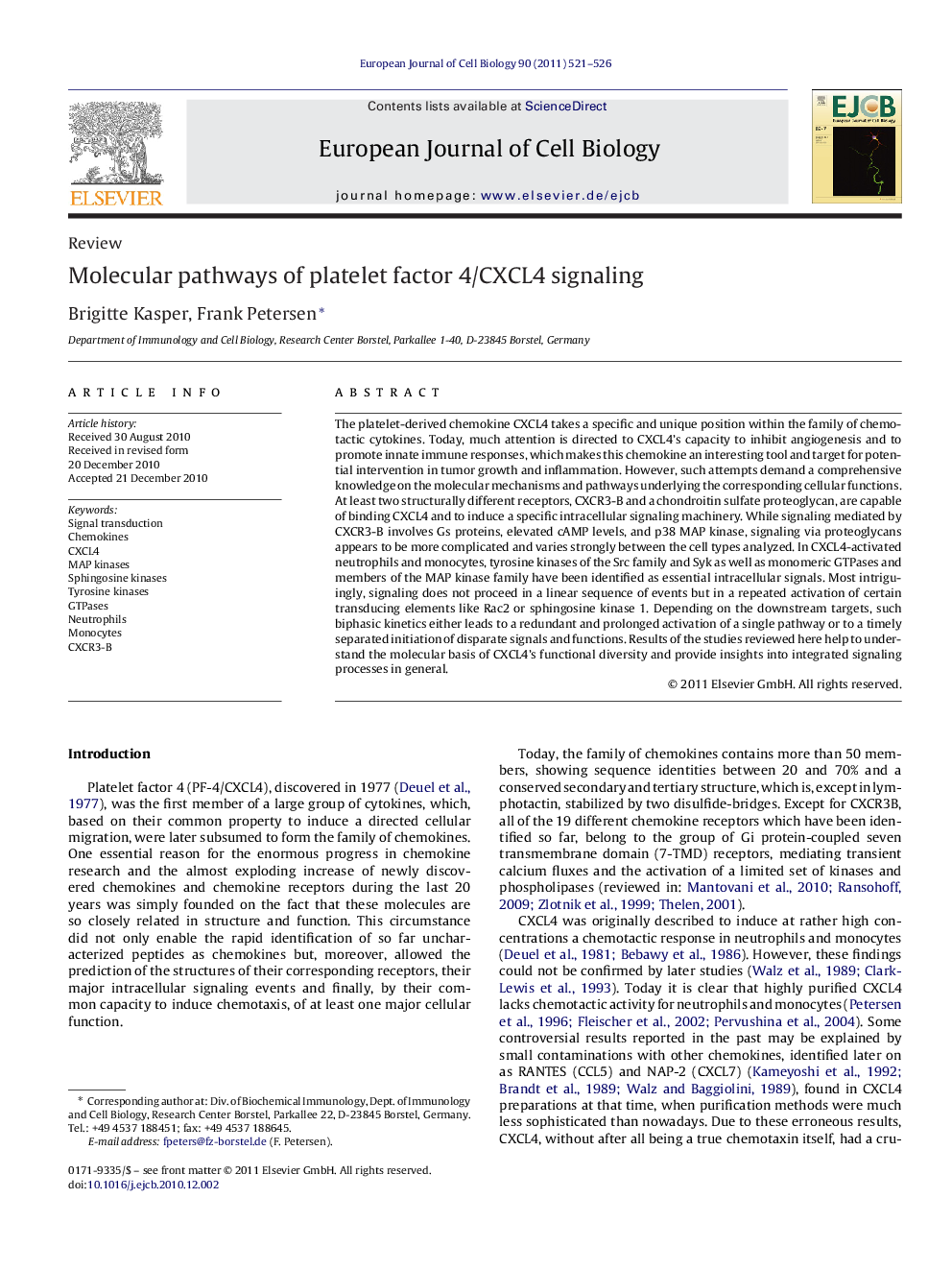| کد مقاله | کد نشریه | سال انتشار | مقاله انگلیسی | نسخه تمام متن |
|---|---|---|---|---|
| 2178700 | 1549714 | 2011 | 6 صفحه PDF | دانلود رایگان |

The platelet-derived chemokine CXCL4 takes a specific and unique position within the family of chemotactic cytokines. Today, much attention is directed to CXCL4's capacity to inhibit angiogenesis and to promote innate immune responses, which makes this chemokine an interesting tool and target for potential intervention in tumor growth and inflammation. However, such attempts demand a comprehensive knowledge on the molecular mechanisms and pathways underlying the corresponding cellular functions. At least two structurally different receptors, CXCR3-B and a chondroitin sulfate proteoglycan, are capable of binding CXCL4 and to induce a specific intracellular signaling machinery. While signaling mediated by CXCR3-B involves Gs proteins, elevated cAMP levels, and p38 MAP kinase, signaling via proteoglycans appears to be more complicated and varies strongly between the cell types analyzed. In CXCL4-activated neutrophils and monocytes, tyrosine kinases of the Src family and Syk as well as monomeric GTPases and members of the MAP kinase family have been identified as essential intracellular signals. Most intriguingly, signaling does not proceed in a linear sequence of events but in a repeated activation of certain transducing elements like Rac2 or sphingosine kinase 1. Depending on the downstream targets, such biphasic kinetics either leads to a redundant and prolonged activation of a single pathway or to a timely separated initiation of disparate signals and functions. Results of the studies reviewed here help to understand the molecular basis of CXCL4's functional diversity and provide insights into integrated signaling processes in general.
Journal: European Journal of Cell Biology - Volume 90, Issues 6–7, June–July 2011, Pages 521–526